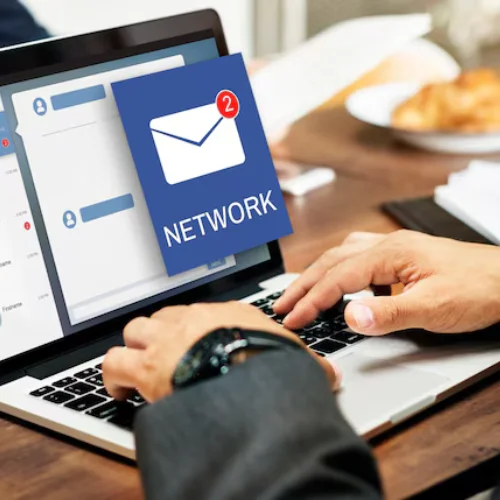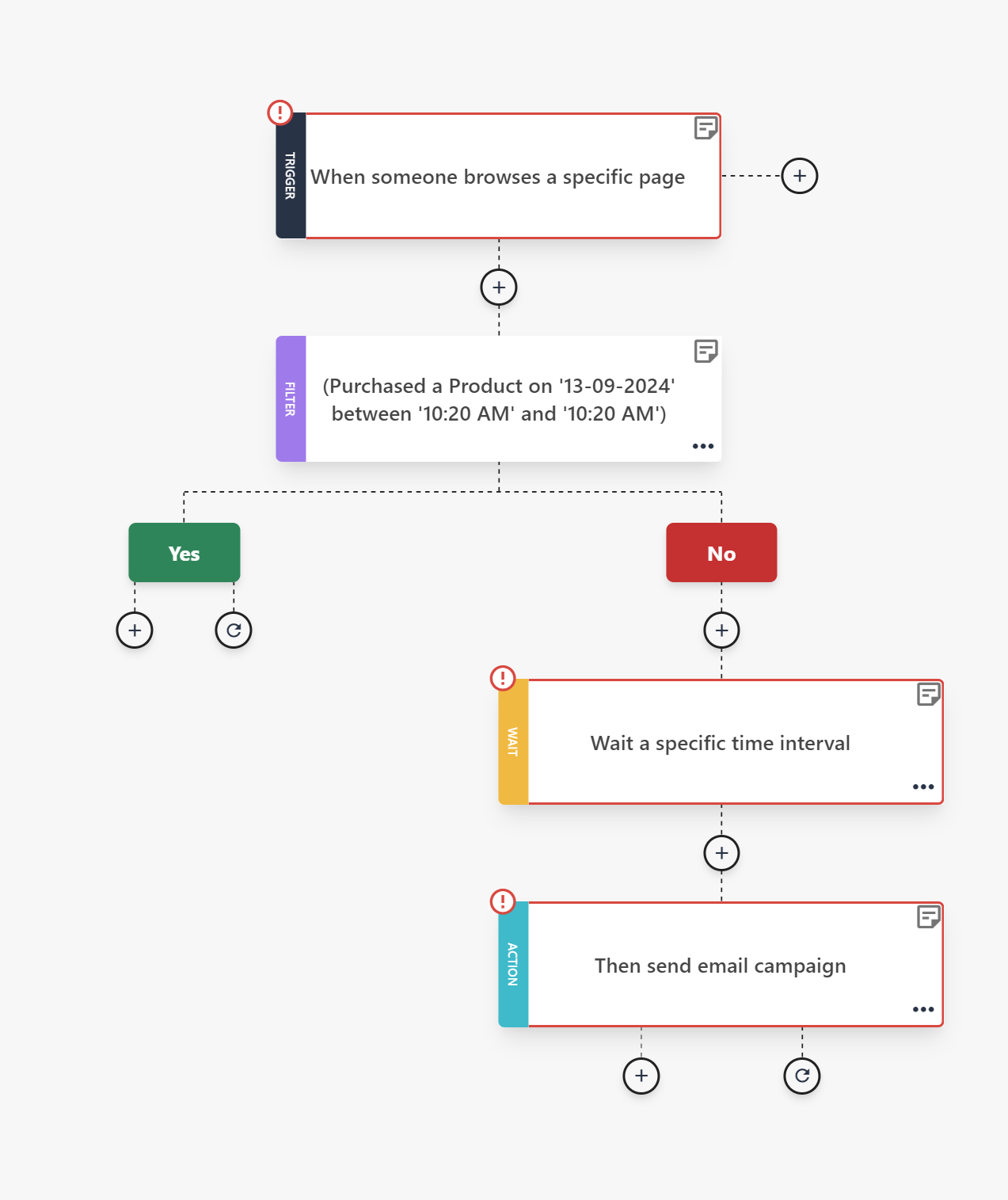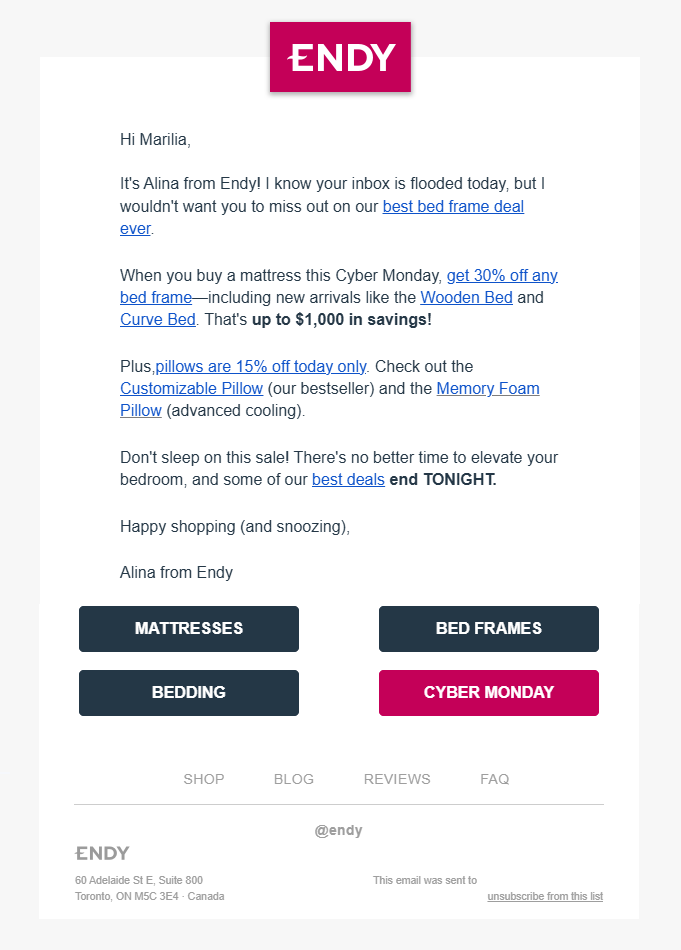
Email Marketing Solutions.....
Email Marketing
Email marketing is the use of email to promote products or services, as well as incentivize customer loyalty. It is a form of marketing that can make the customers on your email list aware of new products, discounts, and other services. Email marketing is one of the most effective and popular marketing tools. Email marketing revenue is t worldwide from 2024 to 2032.
Advantages of email marketing
Email marketing can help you build a relationship with your audience while also driving traffic to your blog, social media, or anywhere else you’d like folks to visit. You can even segment your emails and target users by demographic so you’re only sending people the messages they want to see most.
Email marketing also allows you to run A/B tests of a subject line or call to action to identify the best performing message by using email marketing software that can also be configured to easily send out emails. Check out Mailchimp’s email templates to see more of what you can do with email marketing.
Disadvantages of email marketing
While email marketing seems like the perfect way to reach out to customers, create new prospects, and grow important business relationships, there are some drawbacks. In fact, many businesses are opting to use EZ Texting as another form of communication.
Here are some of the significant downsides to email marketing campaigns.
- Spam. It seems like our inboxes are filled with worthless information. “Lose 25 pounds in two weeks,” “Click here for a big discount.” We all get them and nearly instantly hit delete. In addition, we never even see many of these emails because they end up in our junk or spam folders. Unless you are actively avoiding spam filters, these are messages are often just a waste of time for the company that sent them.
- Size. If your email is too large, it might take a long time to load—or even not load at all. In that time it takes to download, a potential customer has just lost interest, costing you business.
- Competition. Disadvantages aside, email marketing is a popular form of marketing, which means that your email isn’t going to be the only one flooding users’ inboxes. This means that to stand out from competitors, you might need to invest in strong copywriters or offer additional promotions to capture your audience’s attention.
- Engagement. Frequently, a customer sees an ad and signs up for emails based on that 1 instance or offer. They may or may not use it. In any case, they are now in the clients’ database, but that doesn’t mean they will keep opening up your emails and clicking through to your site. You have to continuously find ways to engage your audience, or you might find yourself with high unopened rates or a lot of people unsubscribing.
- Design. Today, you can access an email across a range of devices, such as phones, tablets, and computers. This means that unless you’re designing an email for each platform, your customers might see a less than ideal version of your email. Email marketers don’t know what type of operating system the recipient is using. In many cases, what was once a visually appealing email, can have odd breaks, missing visuals, and logos. These are annoying to the recipient and are quickly deleted—especially if the recipient mistakes it for spam or a scam. These emails are hard to read in most cases and are of very little value.
- Cost. While many email services purport to be free, many still charge fees for additional actions
Email Marketing Solutions
such as adding images or exceeding a word count. Make sure that you know exactly what the guidelines are for free emails or understand what additional charges you may incur. When you have someone design an email template, help build a database of relevant contacts, and the dissemination of the email may start stressing -
Email marketing is a form a digital marketing. It’s a powerful tool that businesses can use to build stronger relationships with their customers and drive sales.
In fact, email marketing is a cost-effective direct marketing channel, generating an average return on investment of $36 for every $1 spent. As of 2024, email marketing revenue was projected to reach an impressive $9.5 billion.
Email Marketing Solutions
For this reason alone, email should be a key pillar of your digital marketing strategy. Not doing any email marketing is like leaving money lying out on the table.
This guide will explain what email marketing is, how it works, and how to get started. By the end, you’ll have a solid grasp of the basics along with the know-how to launch an effective email marketing strategy for your business.
Why email marketing is important
Email isn’t a new technology. It was one of the very first means of digital communication to arrive back in 1971. At 50+ years old, email marketing is used today more than ever before with 4.7 billion estimated users by 2026.
You may be thinking, “Isn’t social media where it’s at for marketing today? What is email marketing going to add to my strategy?” While it’s true that social media is an important channel for any digital marketing strategy, email has several advantages.
Brands can personalize email marketing campaigns to a greater extent than those on social media.
Email marketing is more cost-effective than other channels.
Email marketing is the channel with the highest conversion rate. This is part of what makes email marketing so ideal for small businesses.
Unlike social media, your emails aren’t public discussion boards. Emails give you direct, individual access to your audience’s inboxes and are not affected by constant algorithm updates. Your mail will make it to the inbox as long (as you follow security protocols and build email service provider-friendly campaigns — more on that later).
Email Marketing Solutions
Email marketing performance is easy to track and analyze. With the help of a CRM suite like Brevo, you can see how many people open, click on, and engage with each email campaign you send.
Email marketing can improve conversions of social media content. When used with the same audience, one study found that email improved conversions from social media posts by 70%. Use email marketing to enhance all of your channels.
Still don’t believe us? Let’s take a look at the numbers:
- In 2024, there were over 4.48 billion global email users.
- 99% of email users check their email at least once per day.
- 60% of consumers ranked email in their top preferred communication channels.
- 59% of people said marketing emails influenced their decision to buy.
Given the figures, not having an email marketing strategy means missing out on sales opportunities and the chance to build lasting customer relationships (which ultimately means more sales later down the road).


How To Do Email Marketing
Email marketing is far from obsolete–it’s one of the most powerful digital marketing channels today.
Despite the rise of social media and SEO, email continues to deliver exceptional ROI, with $42 earned for every dollar spent.
Email’s ability to directly reach and engage your audience makes it so effective. But to unlock its full potential for your business, you need to know how to use it strategically.
In this guide, you’ll learn what email marketing is and how it works, why it is important for all businesses, how to get started right away, as well as discover the essential email types, examples, and email regulations.
Design and deliver emails on one platform
Pick your favorite template. Customize it. Hit send.
Try for freeWhat is Email Marketing?
Email marketing is a powerful tool for informing, educating, and persuading your audience to take action. It includes newsletters, promotional emails, transactional messages, and company announcements.
With the integration of AI into their campaigns, brands can now better convert prospects into loyal customers, enhancing engagement and driving results.
Whether you run a small business, an online store, or a large enterprise, the key to success lies in understanding your audience’s preferences and crafting impactful campaigns tailored to them.
Remember, email marketing requires user consent. Treating your presence in their inbox respectfully is essential—overstepping boundaries or assuming your emails deserve special attention can backfire.
Email Marketing Solutions
How Does Email Marketing Work?
Email marketing is a highly effective digital strategy that’s easy to learn and automate, making it accessible for beginners to quickly master and achieve success.
Specifically, email marketing involves three essential components:
An email list
An email list is essential for launching email marketing campaigns. This database consists of individuals who have willingly opted in to receive updates and promotions from your brand.
To ensure the success of your campaigns, it’s equally important to keep your list active and engaged.
There are various ways for you to build your email list. One of the most effective ways is to provide an incentive your target audience will be interested in. In return, they will provide you with their email address.
These incentives are called lead magnets, and they usually are:
- coupons
- ebooks
- downloadable content
An Email Service Provider (ESP)
An ESP is software that helps you create, send, and manage email campaigns effectively.
It offers tools to segment your audience, personalize content, and analyze performance, making engaging with subscribers and achieving your marketing goals easier.
With an ESP, you can also set up automated email campaigns triggered by your audience’s behavior, ensuring timely and relevant interactions.
For example, you can create a special offer reminder when someone browses a specific page on your website and doesn’t make a purchase.

This way, almost every interaction can be personalized, thus achieving higher engagement and conversion rates.
Lastly, modern ESPs can integrate with other marketing tools you use, such as CRMs and eCommerce platforms, so that you can streamline your processes.
A specific goal
The final element is, of course, a clearly defined business objective. Without it, you risk sending marketing messages that your audience will ignore.
To give you some examples, email marketing can be used to:
- generate new leads
- boost brand awareness
- drive more sales
- increase engagement with the brand
- build a relationship of trust with the audience
Having a clear goal before crafting your email marketing campaigns ensures you are on the right path to success.
Benefits of Email Marketing
In today’s competitive marketing arena, standing out requires smart strategies. With email marketing, you can become a gladiator, ready to conquer challenges and build a thriving business.
Here are the top benefits of email marketing and why it’s a must-have in any successful digital strategy.
It has measurable results
Email is a highly effective tool for turning leads into customers, often surpassing the conversion potential of social media platforms. Its direct and personalized approach makes it essential to any successful marketing strategy.
Moreover, people consider email a more trustworthy and professional channel. And with the right elements, like user reviews and testimonials, a single campaign can become a significant conversion asset.
Finally, let’s not forget that emails are measurable regarding open rates, click-through rates, conversions, bounces, and more.
Email Marketing Solutions

To monitor your performance, you need a robust email marketing automation platform to equip you with advanced reporting tools.
For instance, when you sign up for a free Moosend account, the platform gives you access to real-time reporting and analytics to monitor your email performance and optimize your conversion rate.
This way, you will always know how your messages perform!
It’s one of the best communication channels
According to Optinmonster, 99% of consumers check their emails every day. That’s an insanely high percentage.
Also, 72% of people prefer to receive promotional content through emails. Unlike social media or TV ads, email is a more professional channel to receive information about products and services.
Not only that, but technology has enabled email marketers to deliver more personalized content through email marketing automation.
Here’s a simple yet personalized email marketing example by Endy:

Campaigns like this feel more personal to the recipients and have better chances of receiving click-throughs.
It offers increased audience reach
Email is an integral part of our daily online lives, with Statista projecting global email users to reach 4.89 billion by 2027.
This shouldn’t come as a surprise—nearly everyone online has an email address, using it to send and receive countless messages daily.

With mobile email apps like Gmail, accessing and reading emails has never been easier.
This makes email marketing one of the most effective channels for reaching leads and potential customers, offering accessibility and reach.
It has a high return on investment (ROI)
Email marketing stands out for its exceptional ROI, offering approximately $42 for every $1 spent—a return of 4,200%.
This makes it one of the most cost-effective marketing channels for businesses of all sizes.
Its success lies in delivering personalized, relevant messages directly to the right audience, achieving results that other channels like social media or SEO often struggle to match.
It’s a permission-based channel
Email marketing relies on customers willingly sharing their email addresses and expressing interest in your brand.
By obtaining permission to send your messages rather than relying on random ads, you significantly increase the likelihood of engagement and conversions.
Additionally, allowing recipients to unsubscribe ensures your email list remains healthy and engaged, helping you optimize your marketing efforts and budget.
You have an engaged contact list
Last but not least, with emails, you are the owner of your list.
This is a significant advantage, as you’re not reliant on third parties and face no risk of losing this vital asset. Every new subscriber added to your list gives you a direct line of communication with your audience.
Unlike social media platforms, where accounts and leads can vanish without notice, email ensures you retain control over your reach and engagement. Building and maintaining an email list is a long-term investment that continues to benefit your business.
Email Marketing Solutions
Further reading: Learn why buying email lists is a bad idea and how it can harm your email marketing strategy.
Essential Types of Email Marketing Campaigns
Diversifying your email marketing campaigns ensures a more engaging and satisfying experience for your subscribers.
Here’s a breakdown of key email types to incorporate into your strategy:
1. Transactional emails
These emails are automated messages sent in response to your audience’s actions. These emails are essential for delivering crucial information and enhancing the customer experience.
Popular transactional campaigns include:
- Welcome messages: Introduce new subscribers to your brand, set expectations, and offer a warm entry point into your ecosystem.
- Confirmation emails: Notify customers about completed actions like purchases, subscriptions, bookings, or account registrations.
- Account notifications: Update customers on account activities like password resets or membership renewals.
These emails often have high engagement rates since recipients anticipate them, making them a valuable touchpoint for the customer journey.
2. Promotional campaigns
Promotional emails showcase your offers, events, and products, creating excitement and encouraging your audience to act. They can help you drive sales and increase brand visibility.
- Newsletters: Regularly share updates, tips, or curated content to keep your audience informed and engaged.
- Special offer campaigns: Highlight special deals, discounts, or exclusive promotions, enticing recipients to purchase.
- Announcements: Share significant updates, such as new website launches, products, event invitations, or business milestones.
3. Abandoned cart emails
Cart abandonment messages help recover lost sales by targeting customers who added items to their shopping cart but didn’t complete their purchase. They remind customers about their unfinished journey and encourage them to return.
- Single reminders: A one-time message highlighting the items left behind and providing a fast and easy way to checkout.
- Abandoned cart sequences: A series of emails sent over time, building urgency or offering incentives to complete the purchase.
Cart abandonment emails have impressive engagement rates, with high open and click-through rates, and nearly half of those who engage ultimately complete their purchase.
4. Lead nurturing emails
Lead nurturing emails are crafted to guide potential customers along the buying journey by addressing their needs and providing value at every stage. These emails build trust and move leads closer to conversion.
- Educational campaigns: Share insights, tips, or solutions to help leads make informed decisions.
- Product showcases: Highlight features or benefits tailored to the recipient’s interests or challenges.
- Exclusive content: Offer guides, case studies, or tools that resonate with where they are in the sales funnel.
These emails strengthen relationships with prospects and position your brand as the right choice when they’re ready to buy.
5. Re-engagement messages
Re-engagement emails aim to reconnect with inactive subscribers or customers who haven’t interacted with your brand in a while. They rekindle interest and remind recipients of your value.
This email category usually includes:
- “We miss you” campaigns: Acknowledge inactivity and invite recipients to re-engage.
- Incentive-based emails: Include discounts, loyalty points, or special offers to reignite interest.
- Product updates: Share new features or improvements that might entice disengaged customers to return.
Re-engagement emails are crucial in maintaining a healthy sender reputation by targeting inactive subscribers.
By encouraging them to engage or cleaning your list of unresponsive contacts, you reduce bounce rates and spam complaints, ensuring better deliverability and email performance.
6. Upsell and cross-sell emails
These marketing campaigns focus on increasing customer lifetime value (CLV) by encouraging additional purchases. They cater to existing customers by offering complementary or upgraded options.
- Upsell emails: Recommend higher-tier or premium products to enhance the customer’s experience.
- Cross-sell messages: Suggest related items that complement what the customer has already purchased.
Upsell and cross-sell emails help businesses capitalize on existing customer relationships, driving additional revenue through targeted recommendations.
7. Customer relationship-building emails
This email type aims to nurture deeper connections with your audience, foster loyalty, and turn customers into brand advocates. They prioritize the relationship over immediate sales.
- Surveys: Gather feedback through polls, questionnaires, or NPS surveys to improve customer satisfaction and engagement.
- Milestone campaigns: Celebrate personal or brand-related milestones like birthdays, anniversaries, or achievements.
- Loyalty program emails: Keep customers informed about rewards, points balances, and exclusive perks.
